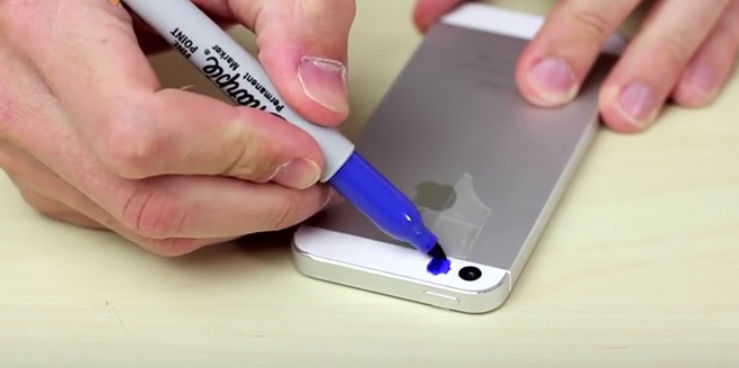The history of the internet is littered with viral “challenge” videos — particularly in recent years. These “challenges” are often performed by younger internet users and uploaded to social media; and one such trend that serves as a prime example is the “Sharpie Shock Challenge.” But what is it? Is it dangerous? And what does science have to say about how it works?
What Is the Sharpie Shock Challenge?
The Sharpie Shock Challenge works like this: use a Sharpie to draw and fill-in a black rectangle on your skin, then place your iPhone’s flash module against the rectangle. Then, take an image with flash turned on. If all has worked out properly, you (or the challenged person) will feel a “shock,” though its intensity apparently varies among those who have attempted the challenge. Reported sensations range anywhere from an actual “shock,” to burning sensations.
Why Are Kids Shocking Themselves?
Despite the challenge itself, the Sharpie Shock Challenge is arguably more notable because of its continued prevalence on social media — particularly among young people. Which can be confusing, because some of us probably have a hard time wrapping our heads around why anyone would willingly shock themselves. Besides peer pressure, of course.
One answer is that the people attempting the challenge are “sensation seekers” — that is, they’re more likely to take risks in order to satisfy their curiosity. Another answer, and perhaps a simpler one, is that kids are just bored. As we’ve seen in numerous studies on the subject, our brains are so hardwired against boredom that people will consistently choose to inflict pain on themselves rather than just be bored.
Science Behind the Sharpie Shock Challenge
Despite the name of the challenge, there’s really no actual “shock” going on, if the Sharpie Shock Challenge actually works at all (more on that below). At best, it’s really just a transfer of heat energy from a smartphone’s flash to the skin. Modern phone flashes are designed to produce a lot of energy in a split second. This, of course, will result in some of that energy being transferred to the skin as heat.
That is, ostensibly, where the Sharpie comes in. The color black tends to absorb much more light than other hues, so it stands to reason that a black box on skin will absorb more of a flash’s energy as heat than the skin normally would. On a similar note, there’s an ongoing debate about whether people with darker skin hues even need a Sharpie to feel a shock. While the science is still out on that, it’s important to note that black Sharpie ink has a lot more concentrated pigment than even the darkest human skin color. Similarly, there is anecdotal evidence of people who have achieved the Sharpie Shock Challenge with lighter-colored marker ink. So take that for what you will.
Does the Sharpie Shock Challenge Actually Work?
Here’s where it can be confusing. In Snopes’ testing of the Sharpie Shock Challenge, they had mixed results. And, of course, there are a ton of Sharpie Shock Challenge videos online where people don’t feel anything akin to a shock. On top of that, there’s some evidence — and science — that suggests that most reaction videos you’ll see online are simply just exaggerated. Case in point: look at the “nocebo effect.” It’s similar to the placebo effect, but just the opposite. Put simply in the context of the challenge, the expectation or anticipation of being shocked could actually cause your brain to feel the expected result — or feel it more than you would normally.
Is the Sharpie Shock Challenge Dangerous?
No. Even the more exaggerated reaction videos show no sign of prolonged damage, or even anyone experiencing that much pain. Presumably, if you repeated the Challenge in the same patch of skin over and over, you could stand to risk a slight burn. Of course, if we factor in the fact that most people are just exaggerating their reaction, we can conclude that there’s not much risk to the challenge at all. Still, we can’t recommend it.


